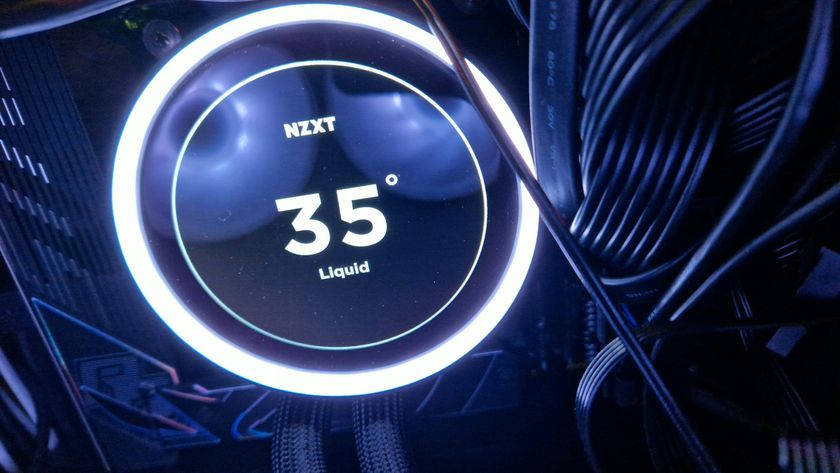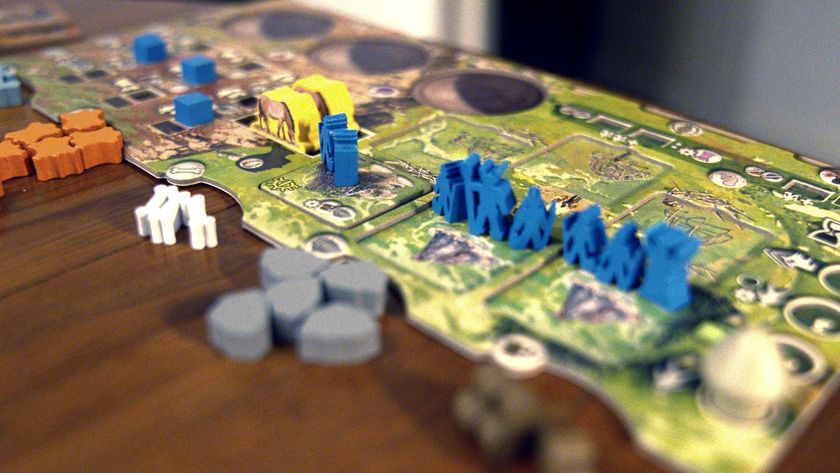Why you can trust 12DOVE
- For more on Transformers,
Since when did childhood franchises improve with age? The invention of the Minicons, micro-Transformers which bolt on to their big brothers like death-dealing accessories, provided Melbourne House not only with a plot for its big robot love-in - rescue the little fellas before the Decepticons enslave them - but also with a ingenious game mechanic. Discovering new Minicons drives your exploration through the game, and configuring the sets of four that each main Transformer can support provides the tactical heart of an otherwise traditional thirdperson blaster.
The Transformers at your disposal are not necessarily the ones that set your childhood heart aflame, but each has its advantages. Hot Shot offers a different take on stealth. At a hundred miles an hour, he can tear through enemy lines faster than they can get a bead on him. Once familiar with a level, you can run rings - if not donuts - around your beefed-up opponents.
Red Alert, with his tougher defences, makes himself useful for recces, although you'll never quite shift the embarrassment of his SUV form. Optimus, inevitably, remains the king. The most handsome of the models, his higher Energon rating means he gives you the best chance to play with combinations of the more intriguing Minicons. And he turns into a truck. One of Melbourne House's defences for the small number of characters is that each has alternate modes.
Once transformed, driving is a no-frills affair, but is solid and pleasing. Glider handling, after being changed in almost every iteration of the game released to the press, has been simplified for the finished version. It loses a little of its precarious freedom, but does a much more reliable job of getting you where you want to go. It's certainly the only point when you'll be cursing the PS2's flabby sticks. For the purposes of running and clusterbombing, Melbourne House has coaxed an unrivalled satisfaction and control out of the DualShock. Fighting is made even more rewarding by the smart and varied enemies. Moving quickly to flank you or unleashing awkward ankle-biting EMP attacks, they create battles that have as much frantic as tactic.
Impressively, Melbourne House has managed to convey the Transformers' bulk and mass with every thudding step they take. Pina colada sunlight flares off every immaculately worn corner of your steel frame, and the joystick gives a little rhythmic tremble as your feet eat up yards of the vast terrain at a time. Taking Optimus down Aztec corridors designed on a human scale feels magnificently clunky and boorish.
The flipside of this marvellously monolithic character design is the inclusion of inexplicable and frustrating platforming sections. These are rare and usually brief, but that won't stop them from interrupting the flow of your game. The iron slabs of Transformer feet weren't designed for precision landing on icy slopes, and getting blasted back down the bottom of a tedious climb makes you all too likely to hit restart to get back to an elevated checkpoint. The other curious decision is the massively exaggerated ragdoll effect triggered when you take a tumble or a hit. Waiting through those few seconds while your Transformer flops around like an dislocated puppet wears thin after the first few dozen times, and entirely undermines the solidity that the animation, sound and rumble has given to the characters.
What will stop you in your tracks is the scale, detail and beauty of the environments. Even after repeated play it's impossible not to pause and breathe in the magnificent view from the top of the Deep Amazon temple. Not only does Transformers not look like a PS2 game, it doesn't even look like a second-generation PS2 game. Sony's third age may have started a few years early.
Sadly, the spectacle isn't quite matched by the level design. Some sections are cleverly conceived - dense wooded plains, trenches and switchbacks, corridor sections which affectionately pastiche mindless FPS blasters - but others are unfocused, wasted opportunities. Revisiting is never a chore, however, and thanks to the high visibility of warp gates and Minicon locations, mopping up is a fast and satisfying adventure.
These Minicons become more and more inventive. Beyond high-powered cannons, sniper scopes and grenade launchers, some coat you in a damaging film of electricity that hurts anything you touch. Combine this with a heavy shield and a boosted melee attack, and you're equipped to fight down and truly dirty. However, you may find yourself relying on only a few, leaving the others languishing in your big metal wardrobe. The slightly cumbersome process of returning to HQ and reconfiguring further discourages any experimentation with the bolt-ons.
Also disappointing are the boss fights, which are your only chance to face thereal Decepticons. Despite a marvellous premise - the battles can range over entire levels as both combatants transform back and forth - they are far less convincing than the rest of the game. Frustrating and awkward in places, boring and repetitive in others, their main worth lies in the sumptuous FMV sequences they trigger.
It's these flaws that stop Transformers coming closer to glory. As it is, the game stands tall as an irresistibly involving adventure, and as a testament to an unusually talented, disciplined and imaginative development team. Twenty-two feet tall, at that.
More info
| Platform | "PS2" |



















